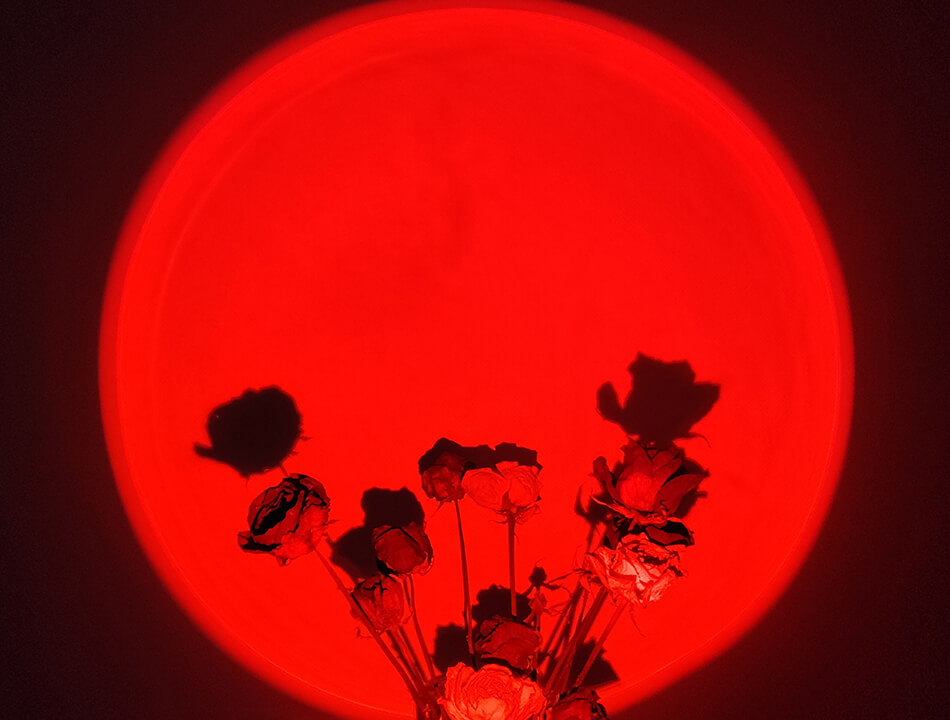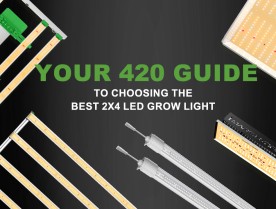
Flowering is an important stage in the lifecycle of any plant. The development of flowers indicates maturity in plants, and these flowers are where new seeds that pass the genetic material to the next generation are made through reproduction.
Considering its enormous importance, it is not surprising that growers often look for ways to boost flowering in plants. This article looks at one of these ways—using far-red light to improve flowering in indoor plants.
Far-Red Light and Its Effects on Flowering
Far-red light or far-red radiation are photons of light with wavelengths ranging between 700 and 800 nanometers (nm). These photons are invisible to the bare human eyes because they are viewed at the edge of the eye’s visual sensitivity to light quality. Like other light colors, far-red has varying effects on plants. It positively influences extension growth in some plants and promotes flowering in others. This article focuses on the latter.
Despite their immobility, plants naturally adjust to their environments by positioning their receptors to receive the best lighting conditions possible. Receptors are internal plant organs that perceive light quality. Phytochrome is the plant receptor that senses the amount of red light (R) relative to the amount of far-red light (FR) a plant absorbs. The balance between the red light and far-red light, i.e., the R to FR light ratio, has significant effects on the growth and development of plants.
Plants growing under intense light conditions (full sun) are more responsive to changes in R:FR than plants that require low or minimal light conditions (shade) to grow. Research has shown that low R:FR can improve stem elongation and upward bending of leaves and other plant parts to increase growth on the lower surface. Furthermore, there is evidence that high concentrations of FR and lower concentrations of R can facilitate flowering in long-day plants, i.e., plants that require the photoperiodic exposure period to exceed the critical period (short nights) to induce flowering.

Applying Far-red Light to Influence Flowering
Plants, except a few, regulate their flowering time to reflect the length of the night and day. As mentioned above, long-day plants flower when the nights are short, usually in late spring and summer. Short-day plants are the opposite—they flower when the nights are longer. Plants use the same receptor—phytochrome—to sense the length of the night and the presence of far-red light. When plants are exposed to only red light, the phytochrome converts the red light into far-red. But the phytochrome re-converts the far-red light into red light when the plants are in the dark. That is the principle behind long-day and short-day plants. Therefore, we can manipulate the flowering of photo-period sensitive plants using different R:FR ratios.
How is this done?
Since we have established that red light is converted to far-red light during the 12-hour light period and far-red light converted back to red light during the 12-hour dark period, we can expose a plant to far-red light for a short period (usually 15-30 minutes) at the beginning of the dark period to make it seem like it has had a longer dark period.
How does this improve flowering in plants?
Altering the natural R:FR ratio in plants positively affects flowering in plants in two significant ways:
-
Flowering starts more quickly.
Conditioning the plant to ‘think’ it has had a longer dark period can trigger it to flower or fruit more quickly. A plant typically requires 12-14 days of 12 hours of light and 12 hours of darkness to start flowering or fruiting. However, adding a short period of far-red just before the start of the dark period can reduce this to about seven days. The response of your plants should guide the duration of exposure.
-
Shortens the flowering period.
The exposure of the plant to a short period of far-red light just after the end of the light period conditions it to believe it has had a longer dark period. However, it also makes it possible to give the plants a longer lights-on period. For example, this could become 11 hours of darkness and 13 hours of light, with the plant exposed to far-red light only for the first 30 minutes of the dark period.
It is recommended that you start with five to ten minutes and then increase it, depending on the changes observed in your flowers. It is essential not to over-expose your plants to extremely long periods of far-red light, as it can lead to stress. When plants are stressed from over-exposure to far-red light, they are conditioned to believe they are close to the end of their growing season. Therefore, they rush the flowering process, leading to poor flower quality.
Tradeoffs of Improving Flowering with Far-Red Light
The use of far-red lighting to improve flowering in plants is not perfect. While the process yields the desired positive results, it also has a few tradeoffs:
1. Associated extension growth.
Improved flowering comes with the promotion of extension growth in plants exposed to red and far-red light. Since the far-red light makes the plant think they are in the shade, they continue growing longer and wider in search of the sun. This leads to long, lanky plants that are not strong enough to hold flowers.
There is no proven way to separate these effects yet, but researchers are working hard to develop one. So, if you are only interested in promoting flowering and not extension growth, using far-red light may not suit you.
2. Dull plant colors.
Another trade-off with exposure of plants to far-red light is the loss of color in plants. It causes the expansion of the leaves, leading to a decreased production of anthocyanins and chlorophyll. These secondary metabolites are responsible for the vibrant color of plants.
3. Low antioxidants.
The number of antioxidants in plants over-exposed to far-red light also drops. Antioxidants are known to protect consumers of plants from the adverse effects of free radicals.
4. Inhibition of germination.
Exposing your plants to red and far-red light during germination reduces the germination rates significantly. Seeds tend not to sprout properly under these conditions, leading to the death of the young seedlings.
Best-In-Class Source of Red and Far-Red Lights
LED grow lights are the best sources of red and far-red lights. These lights are often designed to produce full spectrum light containing all light colors, including white, red, blue, green, and far-red. At Mars Hydro, we have a wide range of best-in-class full-spectrum LED grow lights that meet your plant’s need for red and far-red light.
The Mars Hydro UR45 LED Grow Light for UV and IR Supplement is an LED grow light that provides ultraviolet and infrared to improve the nutritional quality of your plants, boost biomass production, and, most importantly, induce flowering and sleeping periods. It is easy to install and offers separate control of UV and IR.
Final Words
Flowering is crucial in the lifecycle of any plant. One of the perks of indoor cultivation is that it gives the grower more control over the growing conditions, including exposure to light. This article has established that manipulating your plant’s photoperiodic exposure to red and far-red lights can improve flowering. However, this usually comes with a few tradeoffs, including a reduction in the germination rate and the amount of secondary metabolites in the plant. Fortunately, introducing minimal blue light can help mitigate these effects and keep your plants healthy.






